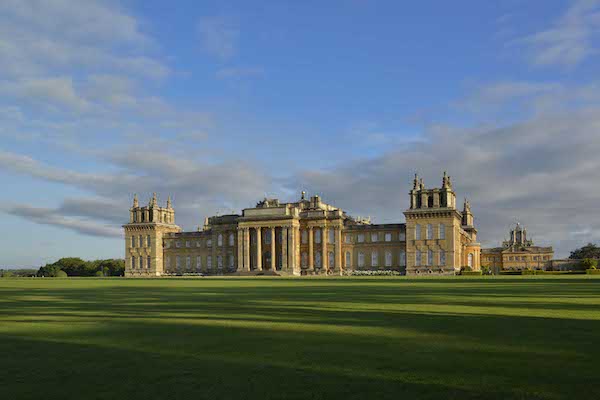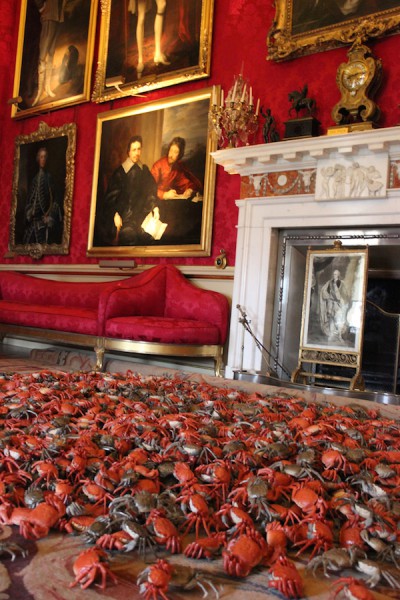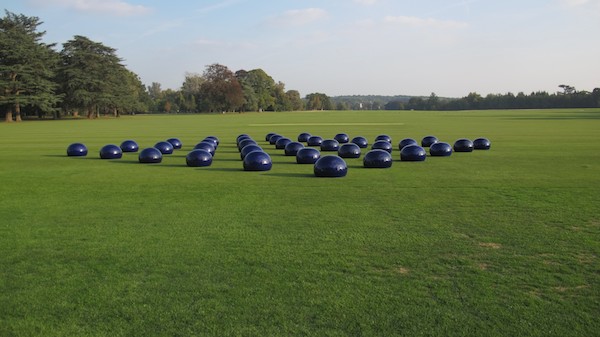Art & Exhibitions
Ai Weiwei Takes Over Downton Abbey-esque Estate
The artist's largest UK show to date inaugurates Blenheim Art Foundation.

The artist's largest UK show to date inaugurates Blenheim Art Foundation.

Lorena Muñoz-Alonso

To say that Blenheim Palace is grand is an understatement: It’s epic. Entering the estate, with its stunning view of the open fields and humongous 18th-century mansion looming at the back, one feels like they have slipped into the opening credits of cult TV drama Downton Abbey.
The Palace, built in 1704 by architect Sir John Vanbrugh and designated by the UN as a World Heritage site in 1987, is the home of the newly established Blenheim Art Foundation, which was launched last week with the largest ever UK exhibition of works by the Chinese artist and dissident Ai Weiwei.
The foundation is the long-held dream of Lord Edward Spencer-Churchill—second son of the 11th Duke of Marlborough—who first took a liking to art as a child, intrigued by his mother’s collection of Miró lithographs, and who became involved in earnest 10 years ago (as he explained during the press presentation of the exhibition).
“Blenheim had got frozen in time, we stopped adding to it, following a mentality that was epitomized by Downton Abbey, whereby you dig a trench and attempt to defend the line,” said Lord Spencer-Churchill, mentioning the famous TV show we had all been thinking of. “What we are trying to do with the art foundation is to inspire great contemporary artists to reach new levels of creativity by doing an exhibition here, and to make this house relevant once again in what we used to be: great patrons of art.”
The foundation is not-for-profit, but with tickets to visit the estate costing up to £22.50, any proceeds that may arise from increasing the numbers of visitors will surely be a welcome help in the costly operation of keeping such a magnificent estate up and running.

Ai Weiwei, He Xie (2012), installation shot at Blenheim Palace, 2014
Photo: Jonathan Prince
“I have a problem with the idea that contemporary art can only be presented in a white box,” Lord Spencer-Churchill told artnet News as he walked around the sumptuous rooms. “I think it makes it much more interesting to present it within a continuum.”
And a white box, this is not. A group of over 30 artworks by Ai have been embedded in the palace’s opulent ground level rooms and galleries. The rooms include the Great Hall, State Rooms, and Churchill Rooms (yes, Blenheim is Winston Churchill’s birthplace, and his bedroom has been preserved intact, now with Ai’s Handcuffs, 2012, on top).
The selected pieces by Ai—made of gold, wood, porcelain, and marble—blend so seamlessly with Blenheim’s lavish neoclassical marble busts, antique furniture and gilded accoutrements that spotting the artworks here becomes a sort of treasure hunt. The device might seem gimmicky. For example, the dining hall features Ai’s famous sculptural take on the Chinese astrology signs, Circle of Animals (2010), which exquisitely matches the room’s gilded clocks and serving plates. In one of the galleries, Ai’s porcelain vases (Owl House, 2010) echo the ones from Blenheim so closely that it is hard to distinguish which one is which. But these subtle gestures work, and the dialogue between artifacts so distant in time does bring out the vitality in each of them, as Spencer-Churchill hopes.

Ai Weiwei, Bubble (2008), installation shot at Blenheim Palace, 2014
Photo: Jonathan Prince
It seems like a long stretch from Alcatraz (“Ai Weiwei Is Filling Alcatraz with 176 LEGO Sculptures”) to Blenheim Palace. And sometimes, the hosts’ wealth and Ai’s political activism make for an uneasy combination. In the library, for example, the walls have been lined with Ai’s photo series Study of Perspective (1995–2011), in which his middle finger is raised to several landmarks across the world, including Tate Modern and the White House. Nearby, on a table, a collection of photos of the Spencer-Churchill family features the Duke shaking hands with the likes of David Cameron, Mikhail Gorbachev, and former White House tenants Ronald Reagan and Bill Clinton.
Stepping outside, the outdoor sculptures are nothing short of breathtaking. The most arresting of them is Bubble (2008), an arrangement of blue porcelain balls, like strange orbs sprouting from one of the lawns of Blenheim. Or the black porcelain set of sculptures Oil Spills (2006), secluded in the estate’s “secret garden,” which suddenly bring back the weight of reality and environmental decay, almost alien in such paradisiacal surroundings.
Blenheim Art Foundation has passed its first trial with flying colors. But, what next? When artnet News asked Spencer-Churchill about upcoming exhibitions, he politely declined to make statements about any plans beyond December, when the current show closes. It will be exciting to see if the foundation can live up to such an auspicious debut.
UPDATE: An earlier edition of this article erroneously referred to Lord Edward Spencer-Churchill, the second son of the Duke of Marlborough, as being the heir to the Blenheim estate. In fact, it is the Duke’s elder son Lord James Blandford who is the heir. We apologise for this error.